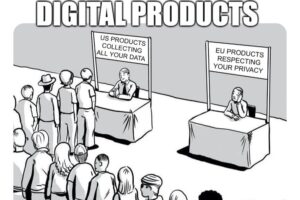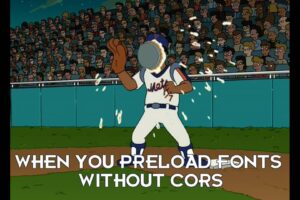For the second part of my WRAPS series, I reviewed the homepages of various online platforms for fair fashion. While many of the tested providers rely on widely-used eCommerce solutions in the background, the winner stands out with an unconventional implementation.
The Result
The evaluation is again based on five criteria. You can find a detailed explanation of these criteria and their weighting here.
The results show that merely deploying a highly optimized eCommerce solution like Shopify isn’t enough to rank highly in this review, especially if wasteful user tracking and self-loading videos are involved. The winner, Fairtragen, scored significantly higher, even though many best practices were ignored. The website is slim enough to cover up these flaws.
| # | Team | Total | CWV | CO2 | A11y | Privacy | Content |
|---|---|---|---|---|---|---|---|
| 1. | Fairtragen | 86.02% | 100% | 92% | 59% | 80% | 100% |
| 2. | Avocado Store | 65.12% | 90% | 57% | 41% | 67% | 100% |
| 3. | Glore | 64.23% | 100% | 66% | 35% | 30% | 100% |
| 4. | Greenality | 62.88% | 100% | 54% | 35% | 50% | 100% |
| 5. | Honest Basics | 61.83% | 100% | 42% | 64% | 33% | 100% |
| 6. | Green Shirts | 50.26% | 67% | 37% | 53% | 37% | 100% |
| 7. | WeDressFair | 43.24% | 98% | 0% | 44% | 40% | 100% |
| 8. | Everlane | 41.65% | 54% | 32% | 41% | 26% | 100% |
| 9. | Jungle Folk | 40.32% | 84% | 0% | 48% | 36% | 100% |
| 10. | Made Trade | 37.25% | 95% | 0% | 38% | 13% | 100% |
Criteria
Some specific considerations apply to the measurements and results of each criterion.
Core Web Vitals
The homepages generally perform well here, though cumulative layout shift (CLS) during loading remains an issue. Self-loading videos are used on some sites but rarely lead to major score reductions.
CO2 Emissions
In the previous review, the site with the worst CO2 emission rate per page view set the scoring scale for others. This time, however, I used fixed thresholds as scoring standards, making cross-comparisons between this and future reviews possible. Unlike the Core Web Vitals, self-loading videos lead to major point reductions in this category, especially because some were lacking browser caching guidelines.
Accessibility
There’s little variation here. No shop offers options to adjust color, font, or language. This is puzzling, as dark mode can enhance accessibility and improve a website’s success rates.
Privacy
Privacy is once again neglected, with many websites connecting to other servers — Google servers are called without permission in 8 out of 10 cases. Security issues were detected as well. While they are generally unwelcome, it’s particularly concerning on sites requiring personal (account) data.
Content
This category was simpler this time. All websites promote sustainable products and corporate culture on dedicated pages. Point deductions would apply for manipulative patterns , but none were detected, so all sites scored full points in this category. Therefore, I’ll omit this category in the upcoming discussion.
How Shop Results Were Determined
More details on the results are in the PDF file, where you’ll also find the scores in subcategories.
Conclusion
It’s surprising how many issues the winner, Fairtragen, could afford. Its slim site with no tracking can still rank well here despite outdated image and font formats, lacking caching instructions, or a vulnerable version of Bootstrap.
Many shops use the eCommerce giant Shopify, known for its web performance leadership. As a result, most homepages score well in Core Web Vitals. However, this optimization cannot mask the careless handling of data (volume and distribution to third parties).
The two American providers (Everlane and Made Trade) especially stand out for weak data privacy practices, which places them at/near the bottom of the table.
- https://www.kojordan.com/blog/the-perks-of-implementing-dark-mode/ (last opened: 11.08.2025)
- https://sustainablewebdesign.org/guidelines/2-11-avoid-manipulative-patterns/ (last opened: 11.08.2025)



